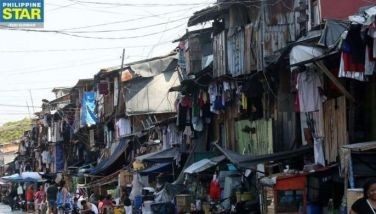Human trafficking: Booming tourism attracts sex tourism
CEBU, Philippines - Last July, the Regional Anti-Human Traf ficking Task Force (RAHTTF) 7 rescued eight women including a 17-year-old and a hearing-impaired in an entrapment operation in Moalboal town. They were reportedly “sold†to foreigners for as high as P5,000 each, according to RAHTTF 7.
Two months before that, the National Bureau of Investigation, the US Immigration and Customs Enforcement (ICE), the Department of Social Welfare and Development (DSWD), the International Justice Mission (IJM) and the Inter-Agency Council Against Human Trafficking (IACAT) rescued three minors and arrested a couple for allegedly engaging in cybersex in Cordova. According to the authorities, the couple allegedly used children, including their own 13-year-old daughter, to expose themselves to their online customers, who, in return, pay them P3000 – P5000 per session.
The IJM’s report revealed that there were 524 victims rescued from sex trafficking in the Metro Cebu area from 2004 to 2013. IJM is a non-government organization that describes itself as a “human rights agency that secure justice for victims or slavery, sexual exploitation and other forms of violent oppression.â€
Alarming
Atty. Joan Saniel-Amit, executive director of the Children’s Legal Bureau (CLB), said the rate of human trafficking, especially on children, has already reached an “alarming†stage. A CLB report, based on the 2008 End Child Prostitution and Trafficking (ECPAT) data, said that in the Philippines, there were 60,000 to 100,000 children prostitutes, and Cebu City was among the primary locations of child-sex prostitution, apart from it being a source.
“In 2004 two of the four most common routes to traffic children included Cebu City, which is widely known to have the highest rates of CST (child-sex tourism) in the country. Filipino law enforcement cites Cebu City as a pedophile hot spot,†read the CLB report. Of all the cities and towns in Cebu, Cebu City, per Department of Tourism 2010-2011 statistics, recorded 1,068,830 million travelers, of which 275,137 were foreign nationals. Lapu-Lapu City came second with 782,798 regional travelers, of which 537,295 were foreigners. Amit said, when an area’s tourism is booming, sex tourism comes right next to it like a magnet. Several of the trafficked individuals, adults and minors, may be from the different areas of the country. There are some from the host province itself, mostly lured by quick bucks, she said. Records also show that there is a rising demand for minors in the sex tourism industry, which Amit said could be attributed to the perception that children are cleaner than their adult counterparts.
RAHTTF7 head Senior Insp. Ma. Theresa Macatangay agreed with Amit, saying Cebu has become a point of destination because of its booming industry, which others see as an opportunity. “They thought they can earn more. Daghang tourist, daghan kwarta,†she said.
Although the CLB also helps in rescue operations, it is more focused on filing criminal complaints against those involved in the trafficking of children “to teach others a lesson,†said Amit.
RAHTTF 7, since its creation in 2009 until the present, according to Macatangay, has yielded 101 arrests and three convictions. This specialized unit, in the same period, has rescued 531 individuals which include 70 minors. But unlike Amit, Macatangay does not see the situation alarming. “I don’t see it as alarming. However we have received considerable number of reports. But I can’t equate in saying it is alarming already,†she said. She explained she owes it to the efforts of all active groups: the PNP, NBI, and other NGOs, wherein from them the public is made aware that human trafficking is unlawful.
“Law enforcement at this time is very much serious,†she said.
The measures
On February this year, President Aquino signed into law the Expanded Anti-Trafficking in Persons Act (RA 10364), which, Amit said, gives “more teeth†to its predecessor. She said this new law penalizes even the accomplice and accessory to the crime, and those who are about to carry out the crime (Sec. 4-A. Attempted trafficking in persons).
IJM said this “expanded law enhances the prosecution of trafficking cases by expanding the punishable acts of trafficking so not only traffickers but their accessories and accomplices can be prosecuted.â€
“Previously, some judges and prosecutors were hesitant to aggressively apply the law because they considered the penalties too high a punishment for minor players in trafficking operations,†it said in its manual. The said NGO is expecting that this law will increase the conviction rate for trafficking crimes. This law also provides stringent penalties for violators: imprisonment of 20 years and a fine of not less than P1 million to P2 million.
The Cebu City Council, in 2008, also passed the Anti-Trafficking in Persons Ordinance, which provides penalties for businesses found to be involved in trafficking.
The 2007-March 2013 data of IJM shows that authorities have arrested 157 individuals in Metro Cebu for violation of RA 10364. In the same period, 210 were charged for violating the same law. For CLB, they have filed 10 cases so far, and with zero conviction.
Amit said the slow movement of the cases on trafficking is one of the reasons why there are still individuals who are unafraid to do the crime. “Di man mahadlok ang mga accused kay naay mga na-dismiss kay nabayran ang mga complainant nga tungod sa kadugay sa kaso mapul-an nalang sad sila mo-pursue,†she said. The CLB lawyer said they have cases that dates back to 2010 and until now are still pending. She said the case could drag on for years, which gives the accused ample time to silence the victims by offering them money. “Pila ra man na’ng P100,000 sa foreigner. Hatagan lang na ang inahan sa biktima, mohilum na ang bata,†she said.
But there are other options to deter the increase of trafficking rate, she said, and one of these is “to strengthen the enforcement of law.†She said it is a “good move†that the government has put up specialized units like RAHTTF and the likes which focus on human trafficking. — /QSB (FREEMAN)
- Latest


























